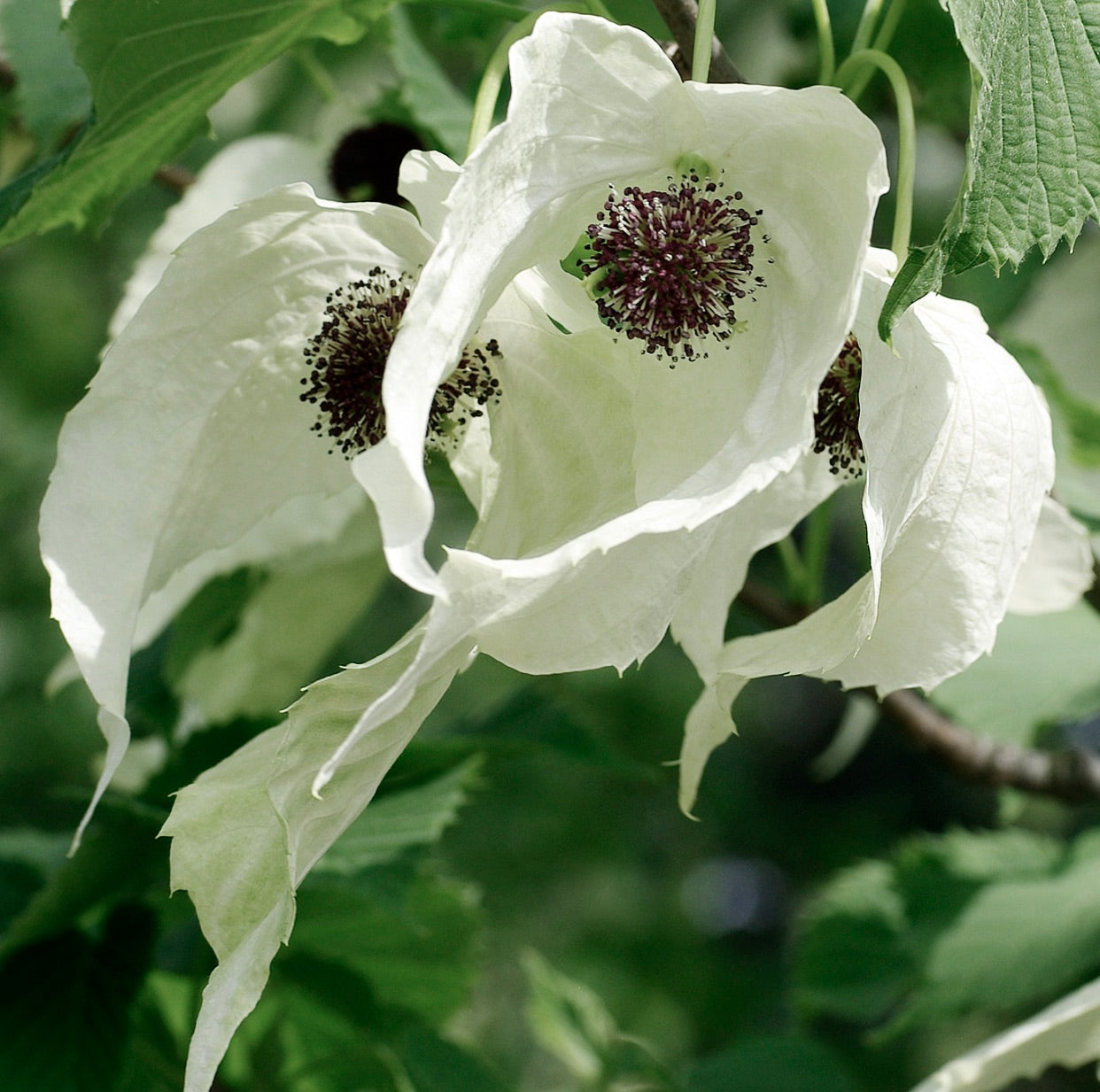- Catalogue Plants
Davidia involucrata 150-200cm
Davidia involucrata 150-200cm
Couldn't load pickup availability
Plant Description
Davidia involucrata, commonly known as the Dove Tree, Handkerchief Tree, or Ghost Tree, is an enchanting and unusual deciduous tree native to China. This tree is celebrated for its striking, ornamental feature—the large, creamy-white bracts that surround its small, inconspicuous flowers in late spring. These bracts flutter in the wind, resembling handkerchiefs or doves in flight, which gives the tree its common names. The Dove Tree's foliage is also noteworthy, with heart-shaped leaves that turn vibrant shades of red and purple in the fall, adding to its visual appeal. This tree is a rare gem in gardens and arboretums around the world.
Cultivation Tips:
-
Climate: The Dove Tree thrives in temperate climates and is best suited for USDA Hardiness Zones 6 to 8. It prefers mild summers and cool, moist winters.
-
Sunlight: Plant Davidia involucrata in a location that receives dappled or partial shade. While it can tolerate some direct sunlight, it generally prefers protection from intense sun exposure, especially in hot climates.
-
Soil: This tree thrives in well-draining, loamy soil with a slightly acidic to neutral pH. Ensure good soil fertility and organic matter content.
-
Watering: The Dove Tree appreciates consistent moisture, especially during the growing season. Provide regular watering to keep the soil evenly moist but not waterlogged. Mulching around the base can help retain soil moisture.
-
Mulching: Apply a layer of organic mulch around the base of the tree to conserve soil moisture, regulate soil temperature, and suppress weeds. Keep the mulch away from the trunk to prevent rot.
-
Pruning: Prune the tree sparingly and only as needed to maintain its shape and remove dead or damaged branches. Pruning is best done in late winter or early spring.
-
Fertilization: While Dove Trees do not require heavy fertilization, you can provide a balanced, slow-release fertilizer in the early spring to promote healthy growth.
-
Pest and Disease: This tree is generally pest-resistant and not prone to many diseases. However, monitor for common garden pests and address any issues promptly.
-
Propagation: Dove Trees can be propagated from seeds, although they may take several years to mature. Collect seeds from ripe fruit and sow them in a well-prepared seedbed in the fall. Stratification (cold treatment) may enhance germination.
-
Landscape Use: Davidia involucrata is highly valued as a specimen tree for its unique and captivating appearance. It serves as an excellent focal point in gardens, parks, and larger landscapes, where its distinctive bracts and fall foliage can be appreciated.
The Dove Tree is a remarkable and sought-after ornamental tree that can add a touch of elegance and intrigue to your garden or landscape. By following these cultivation tips and providing the right growing conditions, you can enjoy the extraordinary beauty of Davidia involucrata in your outdoor space.
PLANTS WILL BE SENT BARE ROOTS WITH NO SOIL AND POT
A phytosanitary certificate (for additional costs of €20,00) is necessary for export plants from Italy to ALL destinations out of EUROPEAN COMMUNITY.
Among which: United Kingdom Turkey, South America, USA, Canada, Australia, Japan, Singapore, Philippines, South Korea, Thailand, etc.
Disclaimer: Please keep on mind that the plant may have grown since pictured. Also be aware that most plants change across seasons. If present foliage could have been fallen or change in its color.
Botanical family: Nyssaceae
Botanical genus: Davidia
Botanical species: Davidia involucrata
SKU:BA-0721-S
Cultivation
Cultivation
Additional information
Additional information
Plant Height: 150-200cm
Plant Diameter:
Picture Taken on:
Pot Size:
Grafted/Not Grafted:


